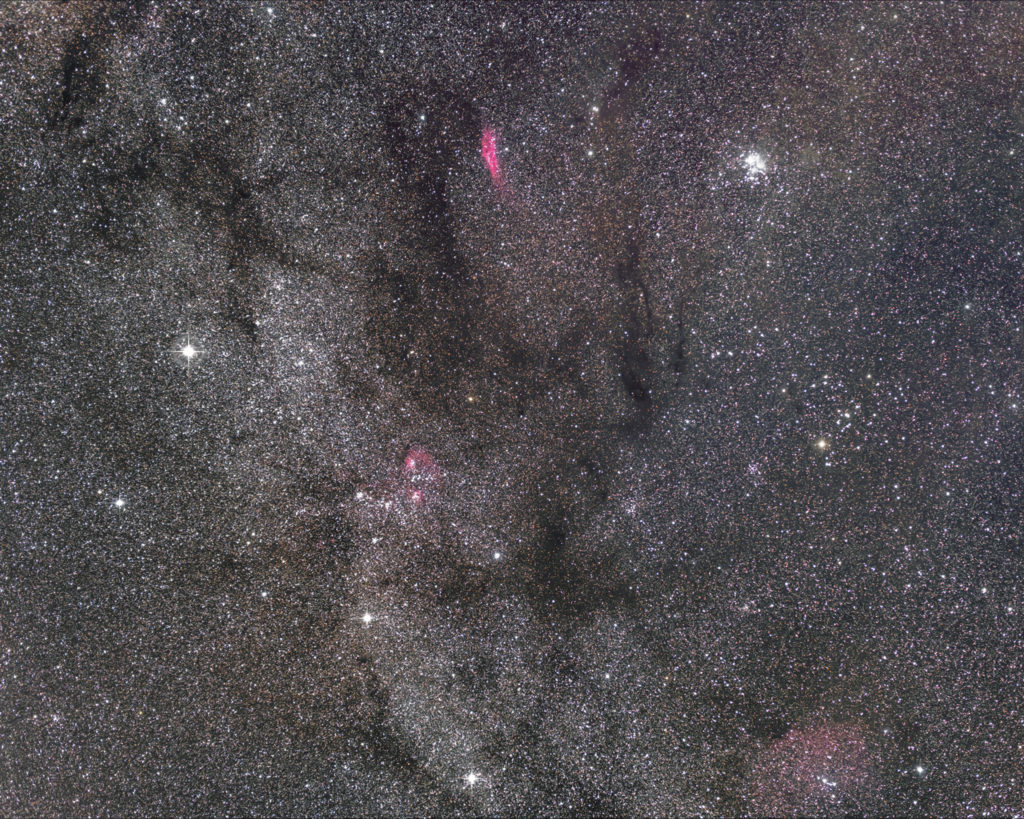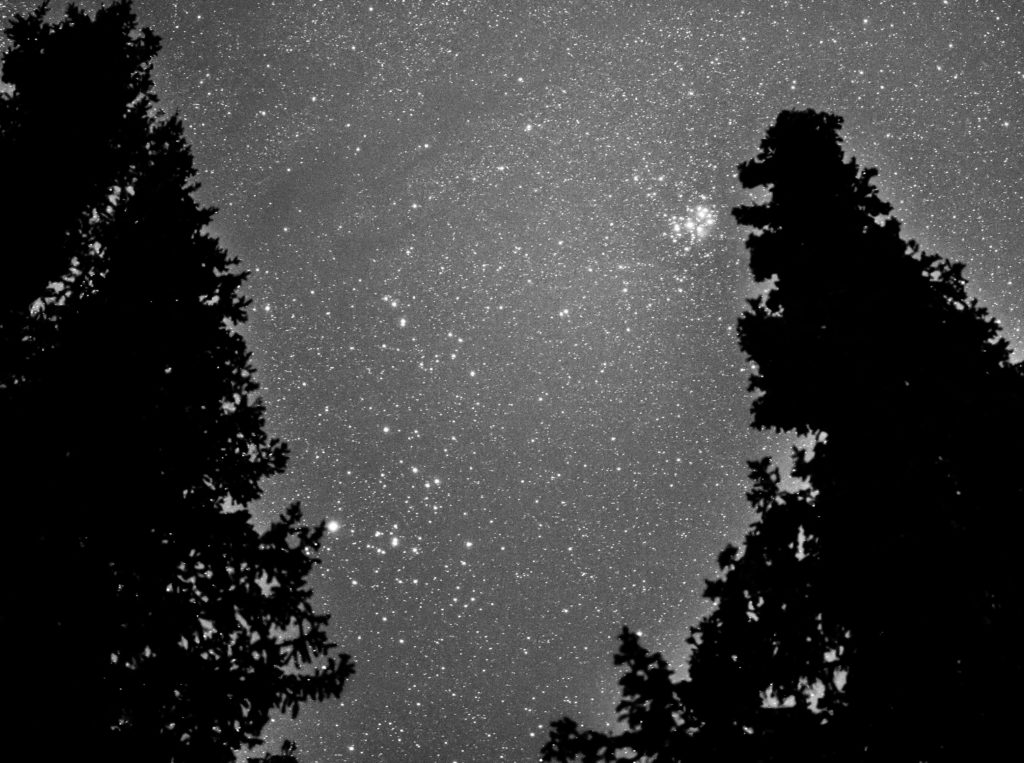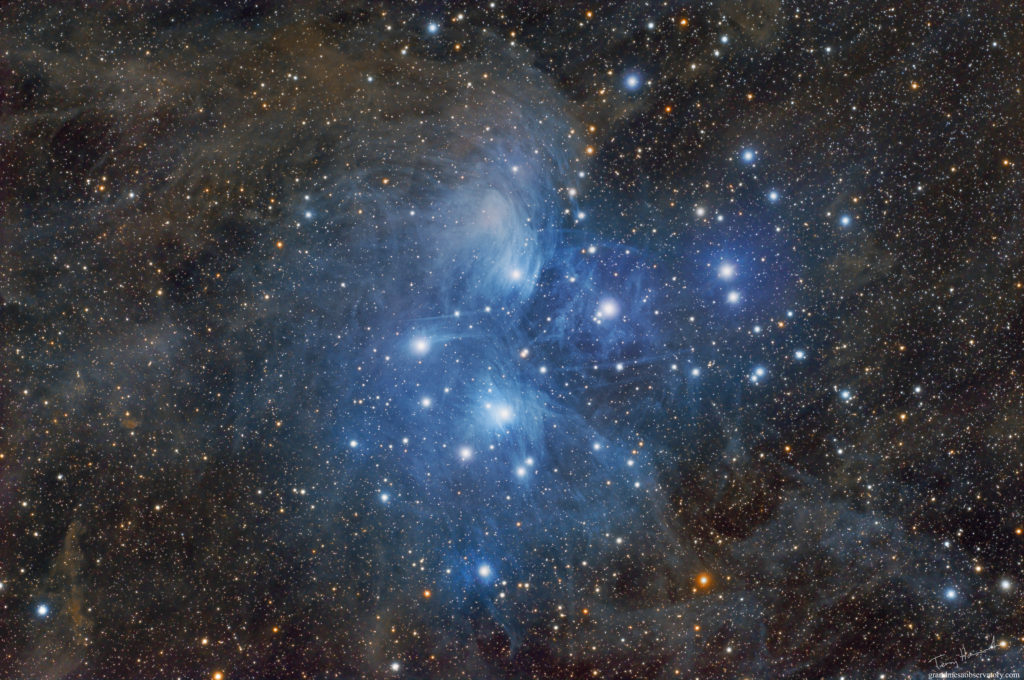
Not far from the Pleiades and Hyades star clusters along the northern Milky Way lies the coal-black fingers of the Taurus Molecular Cloud, the nearest star-forming region to Earth. Unlike the more famous Orion star factory, with the dazzling Orion Nebula and associated bright blue-white stars, the TMC is not well known to most stargazers. That’s because it doesn’t offer much to see, with no bright nebulae and just a dark and sooty network of tendrils that span more than 30o of sky. But the TMC is the nearest star-forming region to Earth, making it of considerable interest to astronomers. It’s also a rewarding target for astrophotographers who can capture its structure against the starry background in the constellations Taurus and Auriga [Read more…] about The Taurus Molecular Cloud
Share This:


